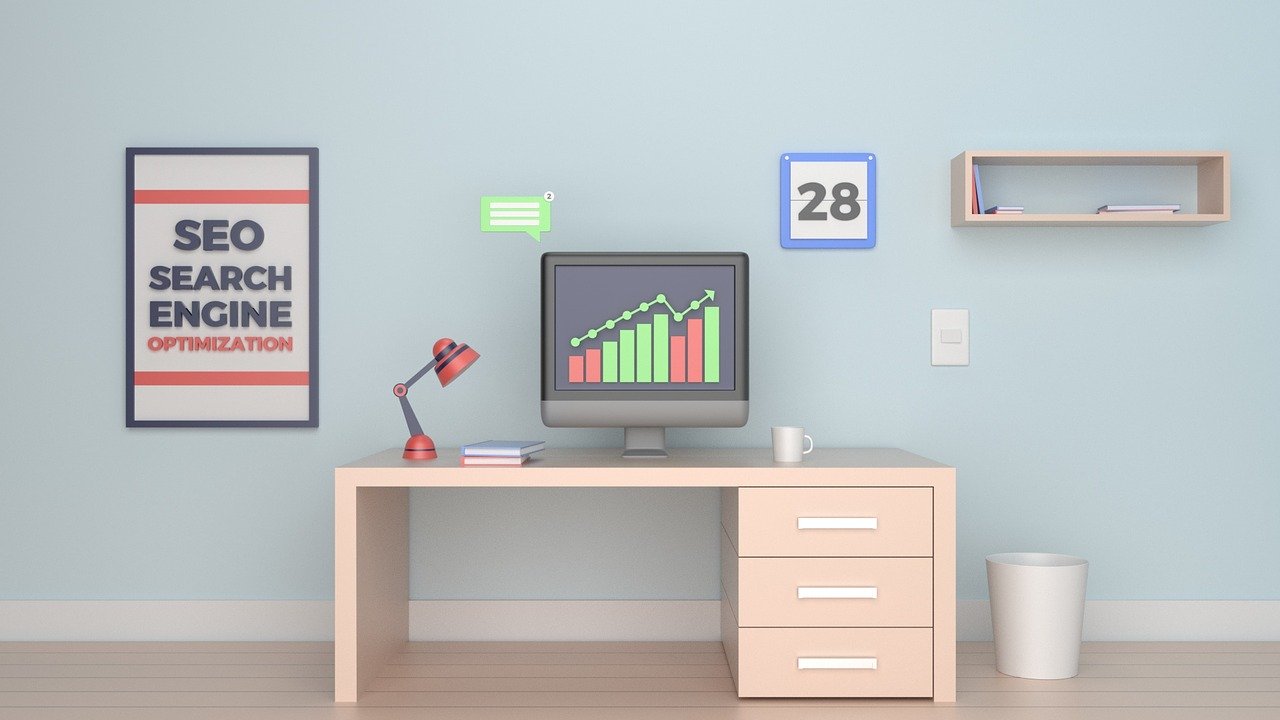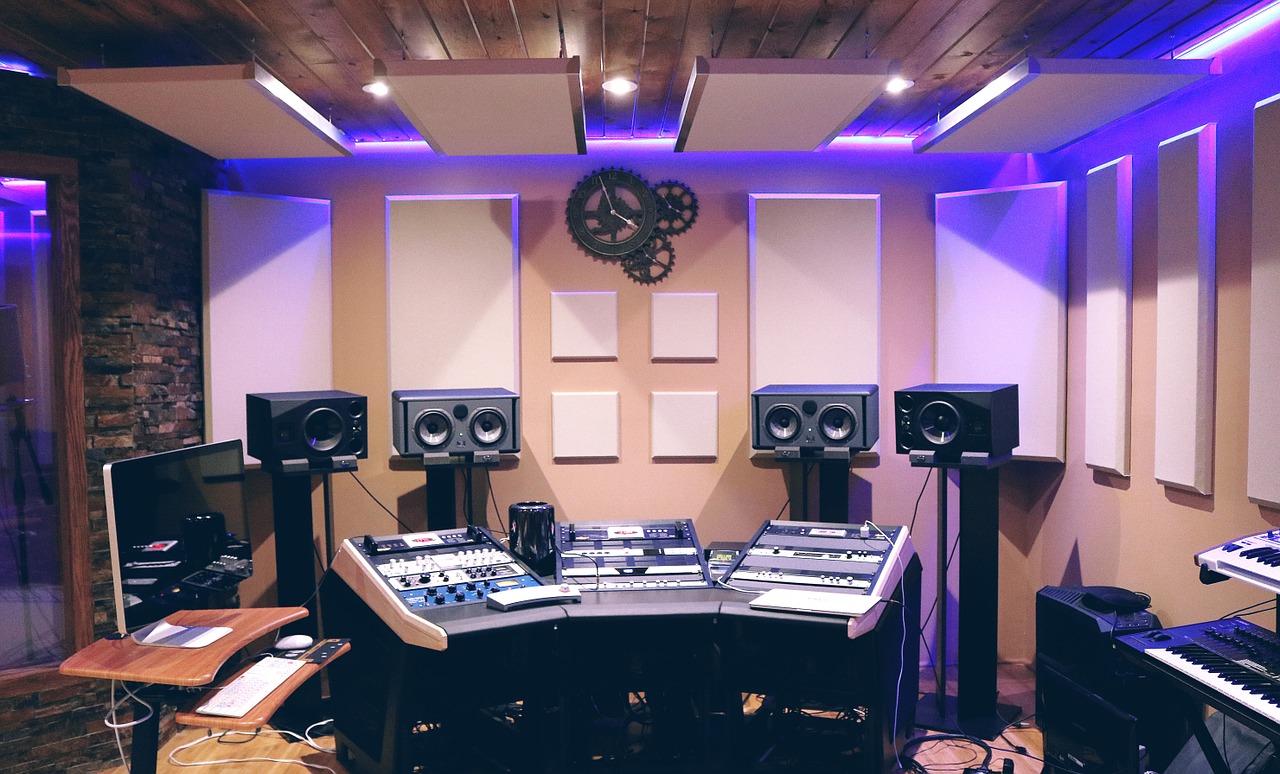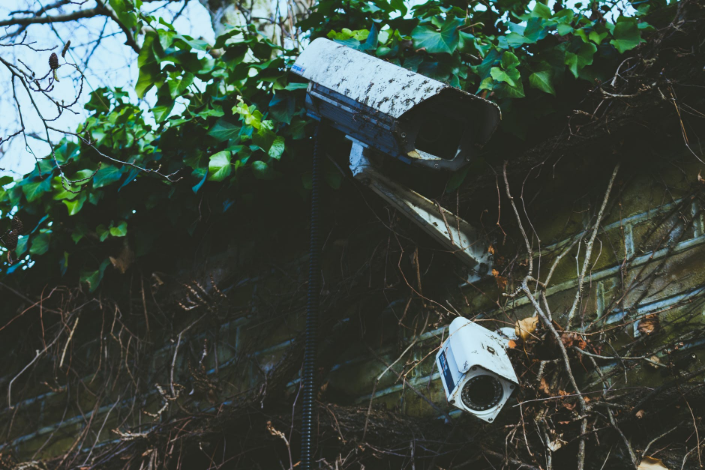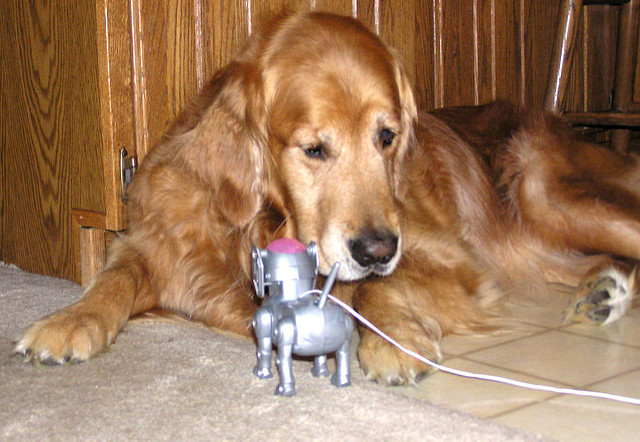
Imagine walking into your home and having it respond to you like an old friend. Lights adjust, the thermostat sets itself, and even dinner starts cooking—all without lifting a finger. This is not just a futuristic dream; it’s happening now with AI-powered smart homes. At the heart of this transformation is ChatGPT, an advanced language model that takes home automation to new heights.
Gone are the days when voice assistants could only obey simple commands. Today’s innovations allow for seamless conversations between you and your technology. With each interaction, these systems learn about your preferences, making life easier in ways we never thought possible.
Voice Assistants vs. ChatGPT Integration
 Traditional voice assistants have paved the way for smart home technology, but they often feel limited. They respond to commands with basic functionality and predefined scripts. While useful, these systems can sometimes lack the depth in conversation we crave. Enter ChatGPT integration. This innovation allows for natural dialogue, making interactions feel more intuitive and less robotic. Imagine asking your home a question about its settings or even discussing dinner options in detail. With this kind of AI at work, you’re not just issuing orders; you’re engaging in meaningful exchanges.
Traditional voice assistants have paved the way for smart home technology, but they often feel limited. They respond to commands with basic functionality and predefined scripts. While useful, these systems can sometimes lack the depth in conversation we crave. Enter ChatGPT integration. This innovation allows for natural dialogue, making interactions feel more intuitive and less robotic. Imagine asking your home a question about its settings or even discussing dinner options in detail. With this kind of AI at work, you’re not just issuing orders; you’re engaging in meaningful exchanges.
Automating Daily Tasks with AI
Imagine waking up to the gentle glow of smart lights that mimic a sunrise. Your coffee brews automatically as you step into the shower, and your favorite playlist fills the air. AI can transform mundane routines into seamless experiences. Smart devices learn from your habits, adjusting temperature and lighting based on your preferences. Grocery shopping becomes effortless with AI-powered apps that track inventory at home and suggest recipes based on what you have. Need to remind yourself about appointments? A quick voice command sets reminders without lifting a finger. Task automation goes beyond convenience; it saves time for things that matter most.

Privacy Concerns with AI Home Systems
As AI home systems gain popularity, privacy concerns are rising. Many users worry about the data these devices collect. Personal information can be vulnerable if not properly secured. Smart cameras and voice assistants might be listening when you think they’re off. This raises questions about surveillance in your own space. Users must consider who has access to this data and how it’s used. Encryption is essential for protecting sensitive information. However, even encrypted data can face breaches from hackers or unauthorized parties. Transparency from companies regarding their data policies is crucial. Users should know what is collected and why.
Setting Up Your First AI Home Hub
 Setting up your first AI home hub can be an exciting venture. Start by choosing a central device that will act as the brain of your smart home. Popular options include Google Nest Hub or Amazon Echo Show. Next, ensure that all your devices are compatible with the chosen system. Smart lights, thermostats, and security cameras often come equipped with their own apps but need to integrate smoothly into one platform for seamless control. Once everything is set up, download the necessary applications on your smartphone.
Setting up your first AI home hub can be an exciting venture. Start by choosing a central device that will act as the brain of your smart home. Popular options include Google Nest Hub or Amazon Echo Show. Next, ensure that all your devices are compatible with the chosen system. Smart lights, thermostats, and security cameras often come equipped with their own apps but need to integrate smoothly into one platform for seamless control. Once everything is set up, download the necessary applications on your smartphone.
This gives you remote access to manage tasks from anywhere. AI-powered smart homes are becoming the norm, and integration with tools like ChatGPT is leading the way. The shift from traditional voice assistants to conversational AI offers a more personalized experience for users. This technology can understand context better and engage in more meaningful interactions.…







 In order to ensure a successful digital transfer process, choosing the right technology and tools for your specific needs is crucial. Before you begin the transfer process, take some time to research and evaluate different options available in the market. If you have wanted to convert your old VHS to digital format, consider using the vhs to dvd service. Consider compatibility, ease of use, security features, and scalability. It’s also important to consider the level of support the vendor or service provider provides.
In order to ensure a successful digital transfer process, choosing the right technology and tools for your specific needs is crucial. Before you begin the transfer process, take some time to research and evaluate different options available in the market. If you have wanted to convert your old VHS to digital format, consider using the vhs to dvd service. Consider compatibility, ease of use, security features, and scalability. It’s also important to consider the level of support the vendor or service provider provides.
 AI Drawing Generator is an artificial intelligence tool that uses machine learning to generate digital drawings based on an artist’s input. It takes a few minutes to learn the basics, but it can become quite sophisticated with practice.
AI Drawing Generator is an artificial intelligence tool that uses machine learning to generate digital drawings based on an artist’s input. It takes a few minutes to learn the basics, but it can become quite sophisticated with practice. With all the arguments against AI in art, it’s easy to see why some people may be skeptical about the use of AI drawing generators. However, many artists are already seeing the benefits of this tool. For starters, AI Drawing Generator saves time and resources for artists by allowing them to create pieces quickly and without having to learn complicated digital painting techniques. Additionally, the tool provides a unique way to create art that can’t be replicated by hand. All in all, AI Drawing Generator is an exciting tool that can revolutionize the way artists work.
With all the arguments against AI in art, it’s easy to see why some people may be skeptical about the use of AI drawing generators. However, many artists are already seeing the benefits of this tool. For starters, AI Drawing Generator saves time and resources for artists by allowing them to create pieces quickly and without having to learn complicated digital painting techniques. Additionally, the tool provides a unique way to create art that can’t be replicated by hand. All in all, AI Drawing Generator is an exciting tool that can revolutionize the way artists work.
 Do you know just how much your data is at risk almost every single day? For instance, on a weak system, hackers can even steal your entire digital identity. Luckily, technology has evolved to entail both hardware and software data encryption methods. Simply put, data encryption works by encoding all your private information. This information is then only made available to people who can access, retrieve, and read it.
Do you know just how much your data is at risk almost every single day? For instance, on a weak system, hackers can even steal your entire digital identity. Luckily, technology has evolved to entail both hardware and software data encryption methods. Simply put, data encryption works by encoding all your private information. This information is then only made available to people who can access, retrieve, and read it. Long gone are the days that having a pin or password was enough security. Nowadays, hackers and even anyone can guess your password! For added security, technology came up with facial recognition. This way, it is only you that can get access to your data. This works through how a computer can register its rightful owner. For example, a computer can note the distance between your eyes and your forehead to only let you in to your data.
Long gone are the days that having a pin or password was enough security. Nowadays, hackers and even anyone can guess your password! For added security, technology came up with facial recognition. This way, it is only you that can get access to your data. This works through how a computer can register its rightful owner. For example, a computer can note the distance between your eyes and your forehead to only let you in to your data.


 No one wants to wait for ages for pages to load. If you are in business, the wait may mean a loss of customers. Time is valuable. Even if you are sourcing the internet for your home, you don’t sit around waiting for pages to load. It is frustrating. Look for a provider that has the highest speed.
No one wants to wait for ages for pages to load. If you are in business, the wait may mean a loss of customers. Time is valuable. Even if you are sourcing the internet for your home, you don’t sit around waiting for pages to load. It is frustrating. Look for a provider that has the highest speed. Different companies offer their services at different prices. however, what is more, important here is the services enlisted in each package and its offers. Check out what other companies are offering. Settle for the one with reasonable pricing and yet good quality and friendly customer care.
Different companies offer their services at different prices. however, what is more, important here is the services enlisted in each package and its offers. Check out what other companies are offering. Settle for the one with reasonable pricing and yet good quality and friendly customer care.
 Experience and training are vital when in need of hiring a fire watch service. A survey will help you notice that the most experienced fire watch service has guards that do random patrols. It’s, therefore, necessary to hire a well-trained and qualified person to avoid risks. It’s advisable to hire a professional agency for quality services.
Experience and training are vital when in need of hiring a fire watch service. A survey will help you notice that the most experienced fire watch service has guards that do random patrols. It’s, therefore, necessary to hire a well-trained and qualified person to avoid risks. It’s advisable to hire a professional agency for quality services. The tools and plans a fire watch company uses are a consideration when in need of hiring one. Professional companies provide emergency fire alarms and fire watch security guards to respond to any emergency.
The tools and plans a fire watch company uses are a consideration when in need of hiring one. Professional companies provide emergency fire alarms and fire watch security guards to respond to any emergency. The special services that a fire watch service offers are a consideration. In cases where a security company provides a service related to your business, that’s an aspect to consider.
The special services that a fire watch service offers are a consideration. In cases where a security company provides a service related to your business, that’s an aspect to consider.
 Clickfunnels is a sales funnel tool that has been up and successful since 2014. It is an easy feature to use and is very hands-on. For example, it has many landing pages that are customizable into anything that your enterprise requires. When you are building the pages, you can simply drag and drop items. Other than that, there is a library of templates for creating the pages. All this makes your work easier and can increase your sales greatly.
Clickfunnels is a sales funnel tool that has been up and successful since 2014. It is an easy feature to use and is very hands-on. For example, it has many landing pages that are customizable into anything that your enterprise requires. When you are building the pages, you can simply drag and drop items. Other than that, there is a library of templates for creating the pages. All this makes your work easier and can increase your sales greatly. This is an online business feature that helps you form connections with customers, and later on, convert the leads into sales. It also includes the drag and drop function and has an interface that is user friendly. It is a good tool because you do not require any coding skills to use it.
This is an online business feature that helps you form connections with customers, and later on, convert the leads into sales. It also includes the drag and drop function and has an interface that is user friendly. It is a good tool because you do not require any coding skills to use it.
 There is no way a marketing strategy will succeed without a reliable feedback mechanism. Communication is an essential part of every organization. While you may be hiring a virtual SEO, lines of communication must be open. It may be best to find it comfortable talking with your SEO and the same thing with your SEO to you. You really deserve to know everything that is going on in your business. An SEO should always update you and gives you recommendations.
There is no way a marketing strategy will succeed without a reliable feedback mechanism. Communication is an essential part of every organization. While you may be hiring a virtual SEO, lines of communication must be open. It may be best to find it comfortable talking with your SEO and the same thing with your SEO to you. You really deserve to know everything that is going on in your business. An SEO should always update you and gives you recommendations. Every business is different from others. This means that SEOs can never be the same even if an SEO is servicing two or more companies. He should employ a different approach because businesses have different goals and needs. Being innovative means being flexible, which can help you adapt better to the ever-changing market.…
Every business is different from others. This means that SEOs can never be the same even if an SEO is servicing two or more companies. He should employ a different approach because businesses have different goals and needs. Being innovative means being flexible, which can help you adapt better to the ever-changing market.…



 Most of the truck drivers out there experience a lot of things, including a lot of noise. Even if it is cars honking their horns or the wind howling in the background, it is crucial to note that it can be irritating. But as a driver, when you opt to listen to music using the trucker headset, all of these things will not bother you as much. If you want to concentrate on your work, these are the right headsets that you need to have. Therefore, ensure that you consider the ones that support noise cancellation.
Most of the truck drivers out there experience a lot of things, including a lot of noise. Even if it is cars honking their horns or the wind howling in the background, it is crucial to note that it can be irritating. But as a driver, when you opt to listen to music using the trucker headset, all of these things will not bother you as much. If you want to concentrate on your work, these are the right headsets that you need to have. Therefore, ensure that you consider the ones that support noise cancellation.
 As far as choosing a center speaker is concerned, you should choose one that provides an adequate frequency range. The frequency range provides crystal clear sound to anyone who is at the center of a listening position. Moreover, the sound quality is at an optimal level, whether you want to have an elaborate or simple system.
As far as choosing a center speaker is concerned, you should choose one that provides an adequate frequency range. The frequency range provides crystal clear sound to anyone who is at the center of a listening position. Moreover, the sound quality is at an optimal level, whether you want to have an elaborate or simple system.
 nozzle, gas hose, and electrode conduit. When the operator presses the trigger or control switch, a wire feed is initiated and the shielding gas and power flow to cause an electric arc to occur. The contact tip is connected to the power source of the welding unit through a cable. It transmits and directs electrical energy to the welding area. The feed wire is guided and protected by the electrode conduit, which prevents buckling as well as maintains constant feed of the rod. The inert gas is directed to the welding zone by the nozzle.
nozzle, gas hose, and electrode conduit. When the operator presses the trigger or control switch, a wire feed is initiated and the shielding gas and power flow to cause an electric arc to occur. The contact tip is connected to the power source of the welding unit through a cable. It transmits and directs electrical energy to the welding area. The feed wire is guided and protected by the electrode conduit, which prevents buckling as well as maintains constant feed of the rod. The inert gas is directed to the welding zone by the nozzle. A majority of the MIG welders use a power supply that has a constant voltage. The length of the arc is usually dependent on the voltage. This means that any small changes in the arc length can result in significant changes in current and heat input. A shorter arc, for example, will result in higher heat input that causes the electrode to melt faster. This, in turn, restores the original arc length. Constant voltage, therefore, means that the arch length remains consistent. A similar effect is sometimes achieved using a power source that has constant current.
A majority of the MIG welders use a power supply that has a constant voltage. The length of the arc is usually dependent on the voltage. This means that any small changes in the arc length can result in significant changes in current and heat input. A shorter arc, for example, will result in higher heat input that causes the electrode to melt faster. This, in turn, restores the original arc length. Constant voltage, therefore, means that the arch length remains consistent. A similar effect is sometimes achieved using a power source that has constant current.
 The first thing to take into account is the type of game to play. A first-person shooter needs advanced graphics capabilities. On the other hand, a strategy game requires high CPU performance. Also, other computer processes must keep up with the speed of play. Many online strategy and real-time games need a balance between the processing power and graphics. Nowadays, genres have become difficult to define, with modern games blending various elements of strategy and action.
The first thing to take into account is the type of game to play. A first-person shooter needs advanced graphics capabilities. On the other hand, a strategy game requires high CPU performance. Also, other computer processes must keep up with the speed of play. Many online strategy and real-time games need a balance between the processing power and graphics. Nowadays, genres have become difficult to define, with modern games blending various elements of strategy and action. When choosing a gaming PC, everything will come down to the balance between processing and graphics. Memory is an important consideration, but most PCs have adequate memory to suit your needs. It is advisable to get at least 1600 MHZ.
When choosing a gaming PC, everything will come down to the balance between processing and graphics. Memory is an important consideration, but most PCs have adequate memory to suit your needs. It is advisable to get at least 1600 MHZ.
 One of the most fundamental functions of surveillance cameras is to prevent crime. The latest statistics show that areas with surveillance cameras tend to have lower crime rates compared to places without cameras. The presence of the system plays a lot with the criminal’s psychological state, prompting them to avoid areas with security systems installed. Fortunately, it also applies to the private domain as those who intend to commit crime tend to avoid houses with surveillance cameras. For that reason, it is not an exaggeration to state that the installation will automatically prevent crimes.
One of the most fundamental functions of surveillance cameras is to prevent crime. The latest statistics show that areas with surveillance cameras tend to have lower crime rates compared to places without cameras. The presence of the system plays a lot with the criminal’s psychological state, prompting them to avoid areas with security systems installed. Fortunately, it also applies to the private domain as those who intend to commit crime tend to avoid houses with surveillance cameras. For that reason, it is not an exaggeration to state that the installation will automatically prevent crimes.


 Usability encompasses everything that is intended to make using the app convenient, pleasant, and fast. Start by ensuring that you have a robust backup, which will come in handy in case a device is lost or hacked. The app should also have a stable user interface and be very user-friendly. Remember to include push notifications as well for users to keep track of everything that happens in their account even without opening the app.
Usability encompasses everything that is intended to make using the app convenient, pleasant, and fast. Start by ensuring that you have a robust backup, which will come in handy in case a device is lost or hacked. The app should also have a stable user interface and be very user-friendly. Remember to include push notifications as well for users to keep track of everything that happens in their account even without opening the app.




